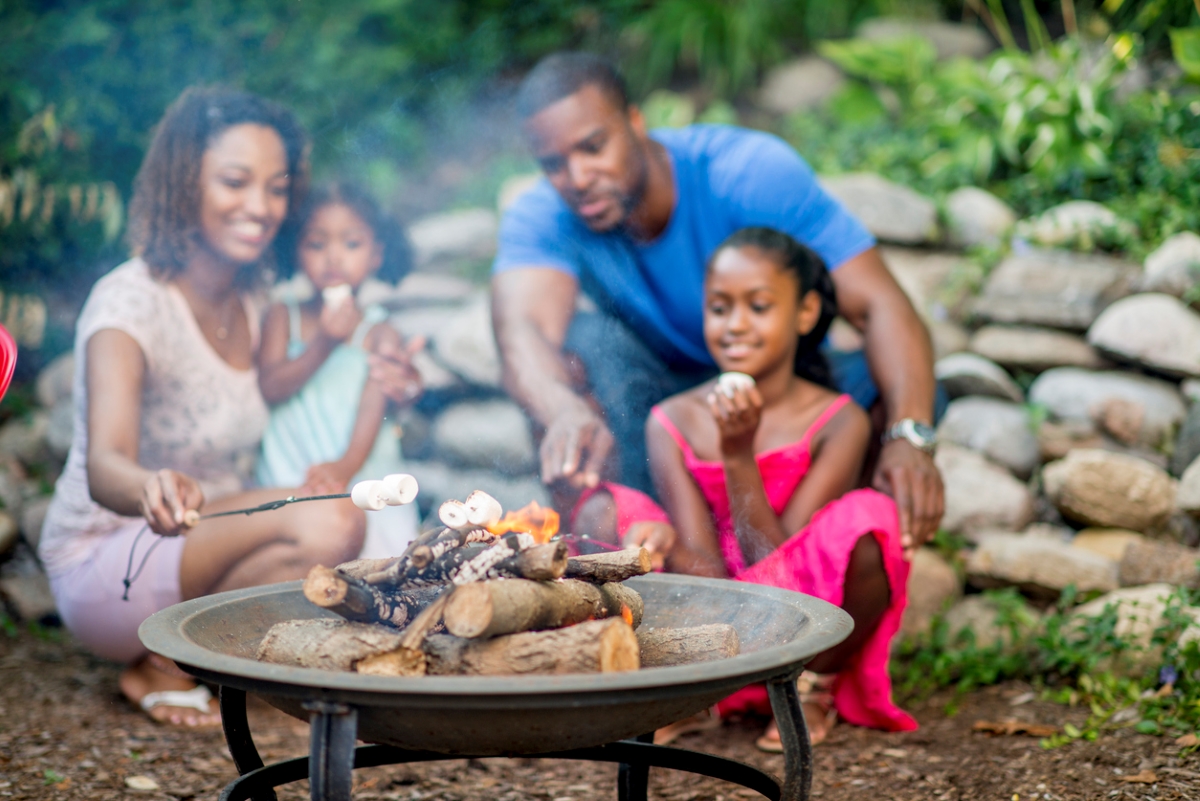

We may earn revenue from the products available on this page and participate in affiliate programs. Learn More ›
In 2021, nearly 6,200 emergency room visits were related to injuries from fire pits or outdoor heaters. Young children are particularly vulnerable to these injuries, and pets also can get burned. The National Fire Protection Association says that fire pits are similar to grills in their ability to spark fires in nearby homes or other structures; backyard barbecues lead to nearly 10,000 home fires a year.
Becoming familiar with what can go wrong around a fire pit, and how to prevent accidents, can help keep summer evenings peaceful and safe. Here’s what you need to know before you light a backyard blaze.
1. Check the wind conditions.

Before you start a fire in a fire pit, check the weather forecast. “I first recommend that you check to make sure you can even start a fire as there might be unfavorable conditions or prohibited by local ordinances,” says Hugh Simpson, who has taught preparedness and survival skills for more than two decades and authored numerous books on the subject.
When considering fire pit safety, remember that it’s not a good idea to use your fire pit on windy days: Wind can not only make it hard to light kindling, but it can also blow sparks onto surrounding brush or structures, potentially starting a fire. “Wind and rain will both work against you in lighting a fire,” says Leroy Hite, founder and CEO of Cutting Edge Firewood near Atlanta. “In most cases, you won’t be able to light a fire when there’s rain coming down.”
If a light breeze is blowing, advise guests to sit on the upwind side of the pit to keep clear of the smoke. If your fire pit is portable, consider moving it to an area with a natural windbreak before you start the fire.
2. Put your pit out in the open.
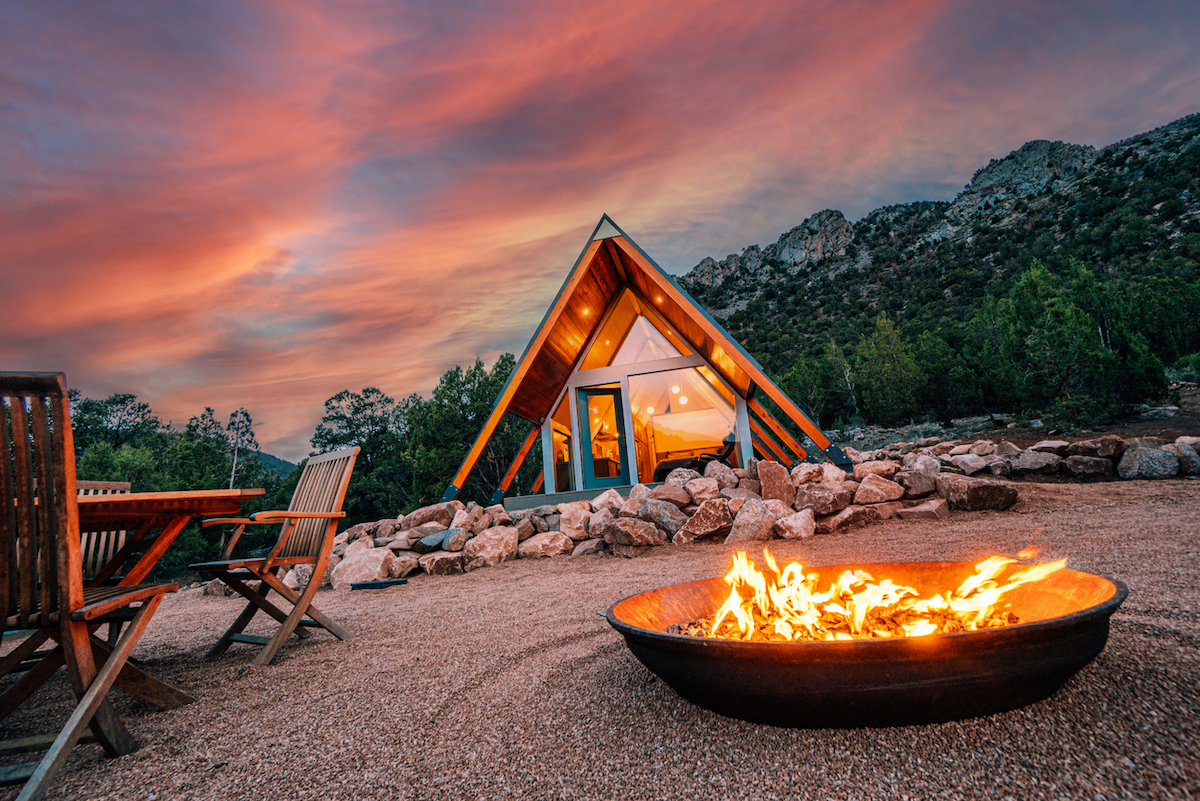
This is a two-pronged piece of advice: First, never position a fire pit underneath a building overhang or in an enclosed area. Buildup of smoke, carbon monoxide, and other harmful gases can be deadly if a fire pit burns in an enclosed space like a garage or a covered and walled patio. Though gas fire pits introduce fewer ignition hazards to nearby materials than do crackling wood fires, they give off carbon monoxide, which dissipates rapidly in open air, but builds up indoors. Propane fire pits can also be dangerous: If they are not properly ventilated, they can cause an explosion.
As you’re researching how to build a fire pit, and you’ve settled on an open-air space for your fire pit, keep the surrounding area clear of yard waste and other flammable materials. “Always clear away at least a circular area of 5 feet minimum from where you are going to have the fire,” says Simpson. Sheds and other structures should be 10 to 20 feet away. Wayward sparks can blow out of the fire and ignite nearby structures, dry wood, leaves, or other debris, and you could end up with a fire emergency.
3. Don’t burn construction lumber.
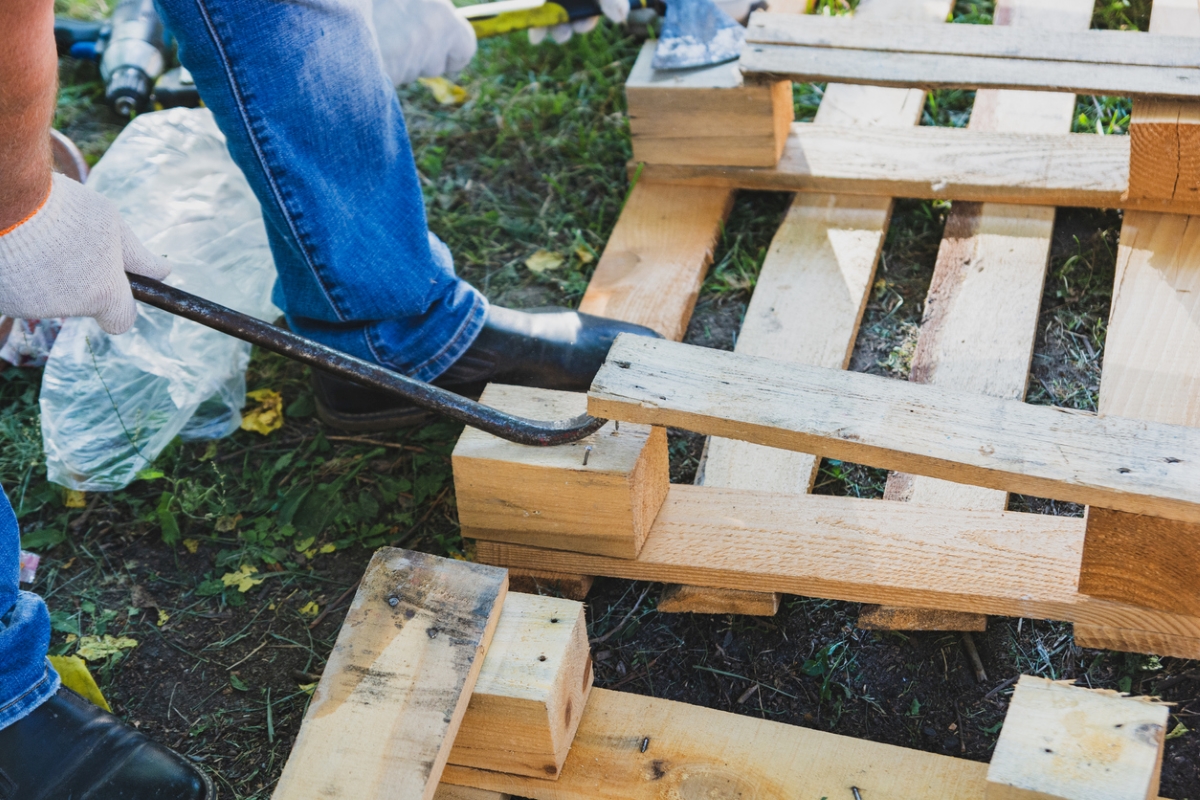
To fuel your fire, go ahead and use the branches you sawed off that damaged oak tree after last winter’s storms, or buy seasoned hardwood kindling and logs. You can also use softwoods like pine, but know that they burn less efficiently and can give off more sparks and smoke than harder woods.
However, one cardinal firewood rule to remember is that you should never burn construction materials like plywood, MDF, pressure-treated wood, or chemically treated wood pallets. Construction lumber is treated with chemical resins, adhesives, and other substances that emit toxic fumes when they’re set ablaze.
4. Keep a fire extinguisher within reach.
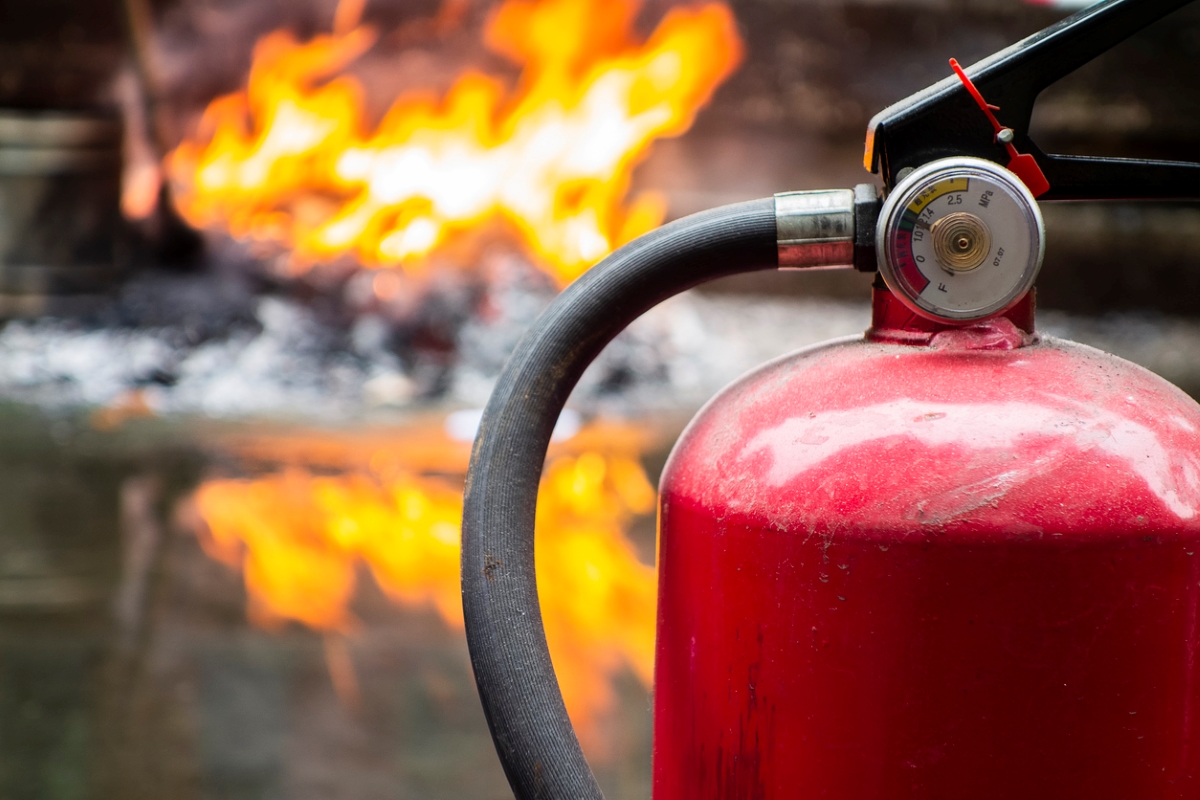
Fire can be magical, but it can also be an unpredictable, destructive force. If you’ve set your fire pit in a safe location and taken the speed and direction of the wind into account, you probably won’t encounter any serious problems. Still, take every fire pit safety precaution: Keep a shovel and water at hand, just in case. In an emergency, use the water to quench the fire and the shovel to smother the flames by piling dirt on them. If you’re camping, take extra precautions, says Simpson. “Even if I’m out in the wilderness, I will build as close to a water source as possible.”
It’s also a good idea to invest in a fire blanket, which can be used to smother a blaze in or around a fire pit, and a fire extinguisher (the type of fire extinguisher you should buy depends on the fuel your pit uses). Teach kids to “stop, drop, and roll” in the event their clothes catch fire. You may never need any of these safety measures, but it’s best to be prepared so that a fun evening by the fire never ends in tragedy.
5. Keep chairs away from the fire.
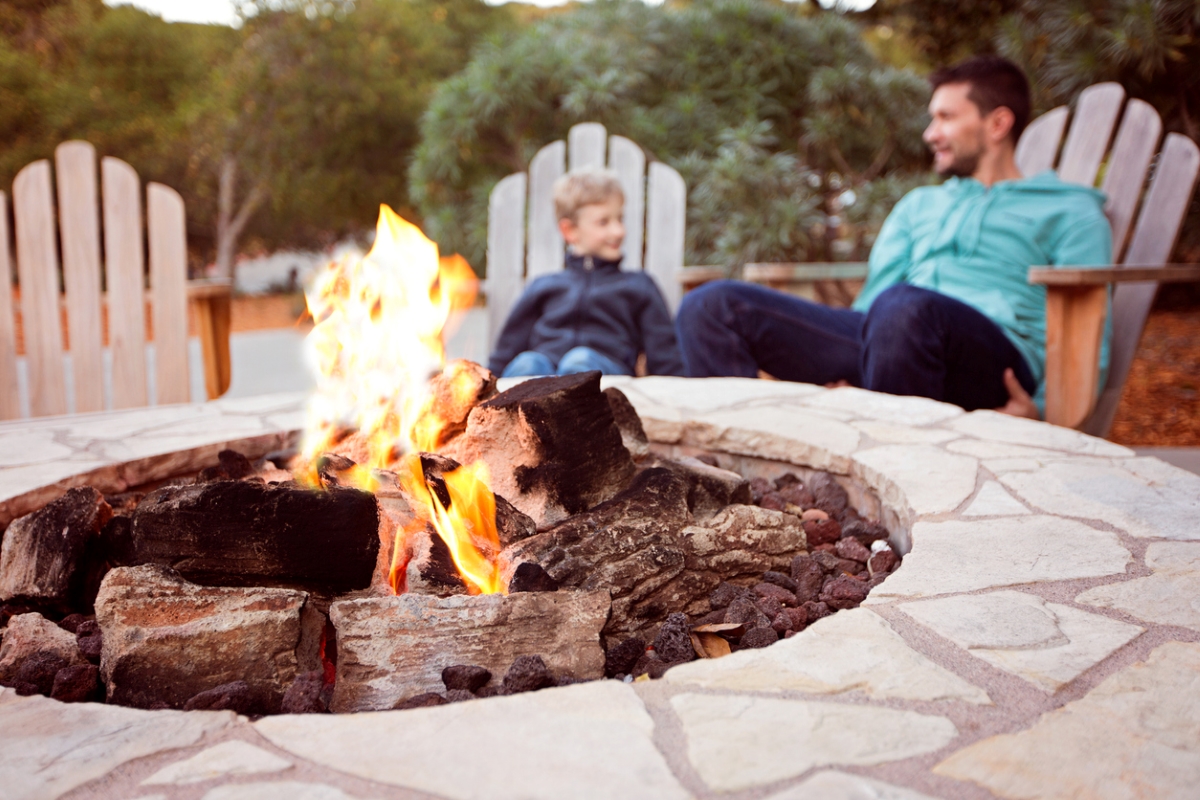
In theory, most folks know to be careful around a fire pit, campfire, or chiminea, but in the excitement of a serious s’mores session, you may inch a little too close to the flames, and that’s when hair, clothes, or other materials can catch fire. Keep fire pit chairs at a safe distance from the fire pit (generally 2 to 3 feet for gas fires and 3 to 4 feet for wood-burning fires).
Also, keep children 3 to 10 feet from the flames. Make sure your sleeves are rolled up and hair tied back when you’re tending a fire or roasting food over an open flame.
6. Never leave a fire unattended.
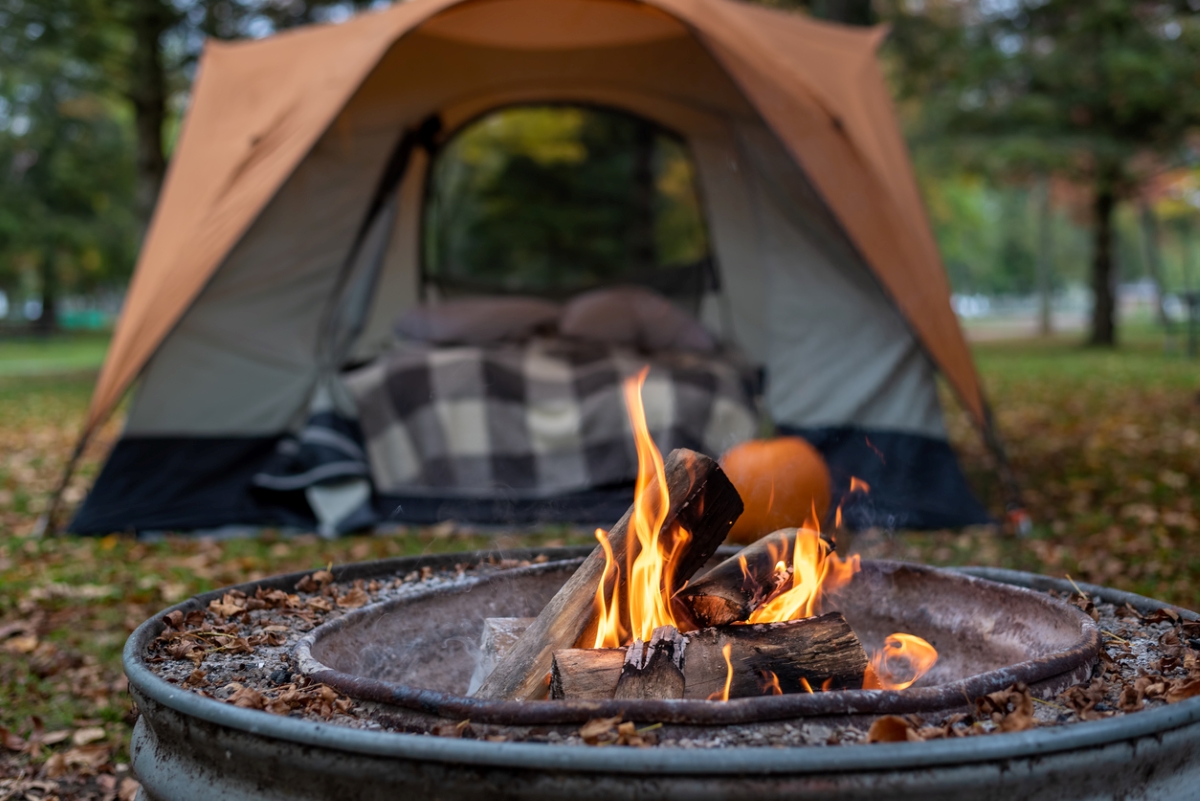
After a fire dies down and you’re left with nothing but glowing embers, you may think you’re in the clear to sneak back into the house for a brief bathroom break or to turn in for the evening. Don’t do it! If you must leave the area, deputize a responsible party to monitor the fire or extinguish the fire completely before leaving.
Even tiny sparks are still a threat to your safety—after all, almost-extinguished fires have been responsible for some of the most severe wildfires in U.S. history. “If you need to leave the fire pit quickly, then dousing the fire with water is your best option although it can leave a mess,” says Hite. “Pour water over live embers, and turn logs to make sure all sides of the wood have stopped burning before you call it a night.”
7. Drink responsibly.
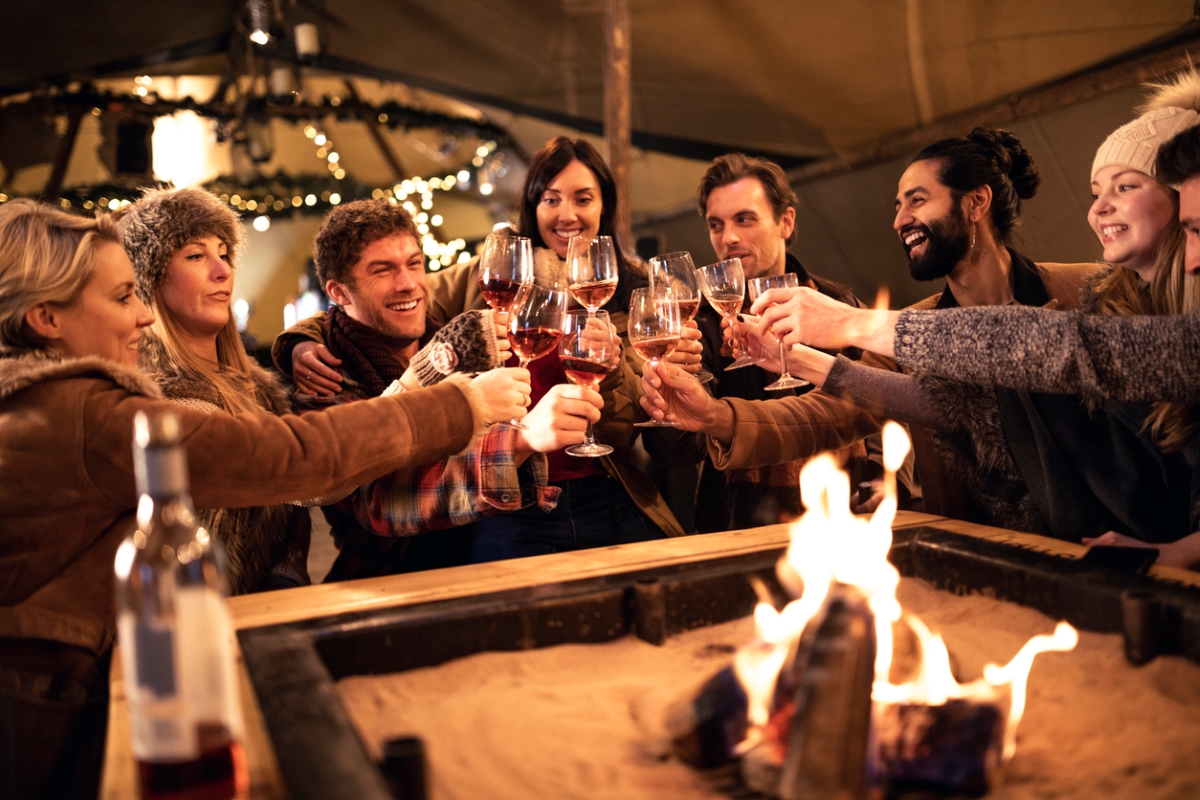
Fire and alcohol don’t mix. Not only is alcohol flammable, but overindulgence in alcohol impairs coordination, judgment, and reflexes, which could result in injuries to anyone gathered around the perimeter of a fire. If you or your guests are going to drink close to a fire pit, do so in moderation, or perhaps choose to use a smokeless fire pit. Keep everybody a safe distance from the flames, and be ready to douse the fire at a moment’s notice.
8. Always heed no-burn alerts.
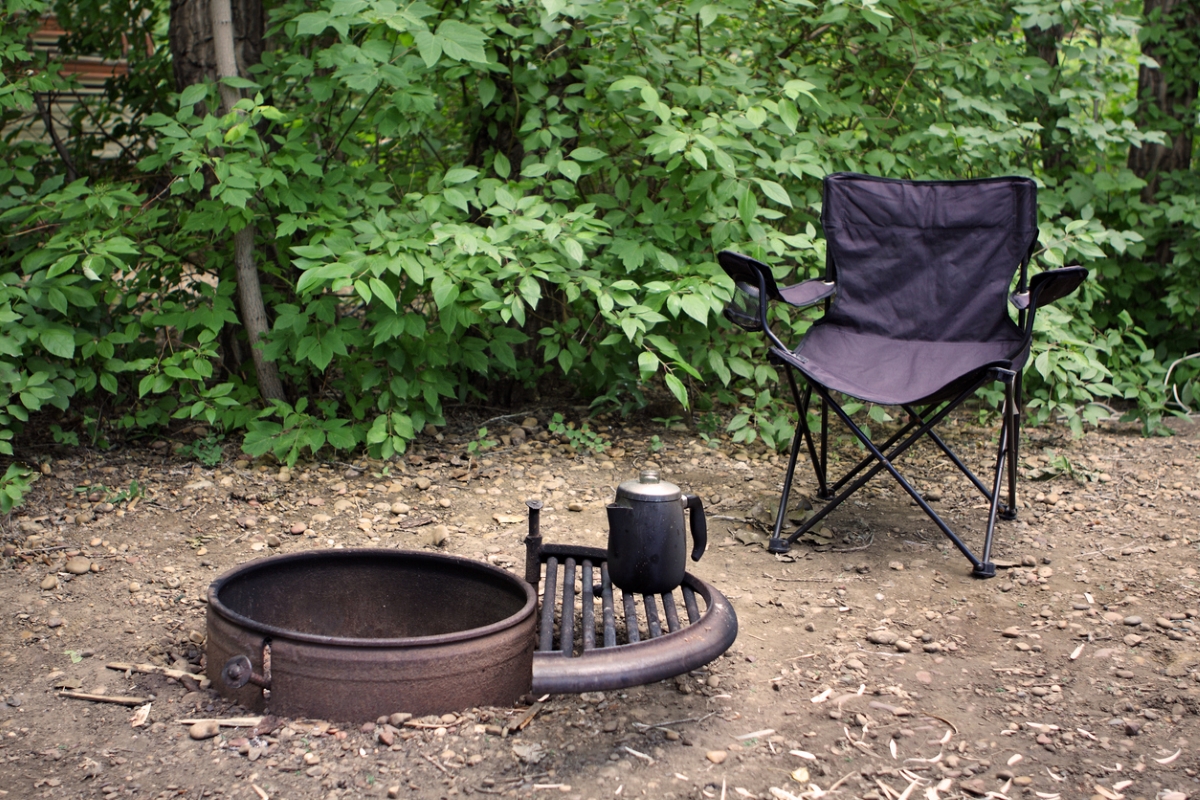
When high emissions and weather conditions combine to increase fine particulate pollution to an unhealthy level, some municipalities issue no-burn alerts to protect air quality or to reduce the risk of out-of-control fires. Noncompliance with a no-burn order not only puts your community’s health at risk, but it could also result in fines.
9. Make sure there’s plenty of clearance overhead.
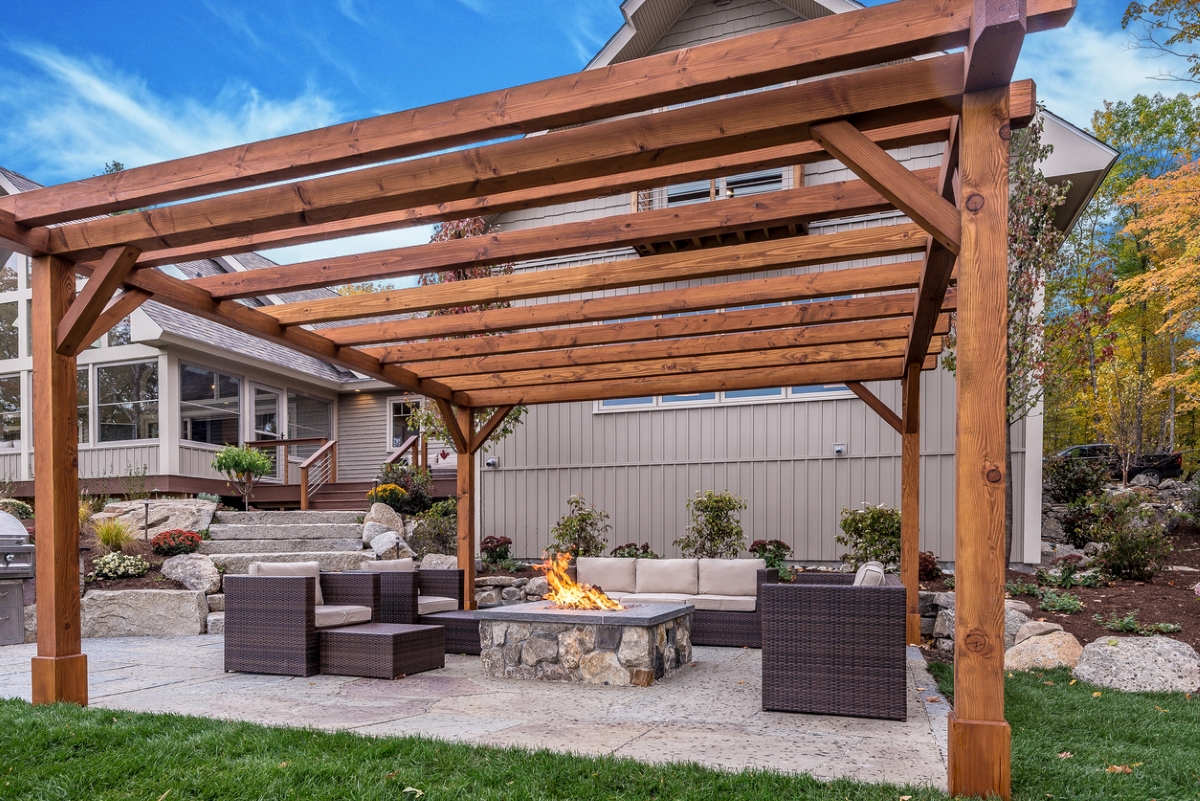
We’ve already warned against setting up a fire pit in an enclosed space, but a roof isn’t the only issue you may encounter above a fire. Never set up a fire pit that’s directly underneath string lights or power lines—both are fire hazards. Make sure there’s plenty of clearance between the pit and surrounding trees, too, because there may be low-hanging branches in the area this year that weren’t there in previous years. Ideally, you want 20 feet of clearance between tree branches and your fire pit zone—12 feet at an absolute minimum.
10. Set up the pit on a safe, stable surface.

The nice thing about portable fire pits is that you can set them up where you’re most likely to congregate, and for many homeowners the deck is the place to be. However, putting a fire pit directly on grass or wood surfaces is a bad idea. Pits should be situated on fire-resistant surfaces made of metal, bricks, concrete pavers, gravel, or sand. Many portable fire pit manufacturers recommend pit pads or other heat shields for their products.
If you have a gas fire pit, situate it on a pedestal or other apparatus that raises it above flammable surfaces—it’s important to allow heat to escape.
11. Watch what you throw into the fire.
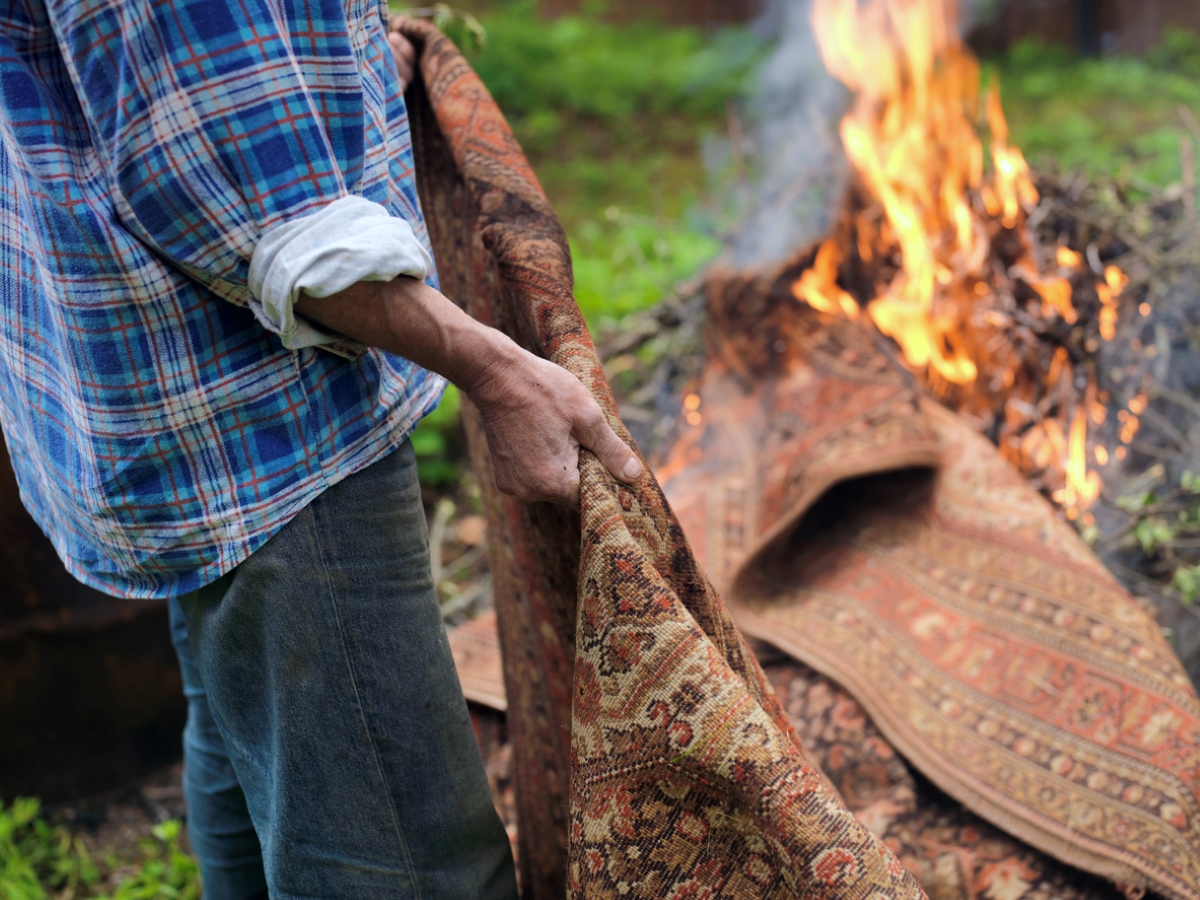
The right materials can get a fire going safely, but starting a fire with the wrong materials—or adding them as the night progresses—can ruin a summer evening. Never start a fire pit with lighter fluid or gasoline, which can be too much fire too soon and can release toxic fumes. Start a fire with a lighter and some kindling or a fire starter (such as dried leaves or dryer lint).
Resist the temptation to burn trash, plastic, or paper in a fire pit. “People get excited around fires. Not just kids—people like to throw stuff into fires, light things on fire,” says Sean Gold, founder of TruePrepper.com. “Don’t throw lightweight things like leaves that can be carried by the wind, or sticks that are long and hang outside the fire pit.” Some materials can create an abundance of floating ash, toxins, or even a flash fire. Gasoline or other liquid accelerants added to a fire can even cause an explosion.
12. Use a screen to contain sparks.
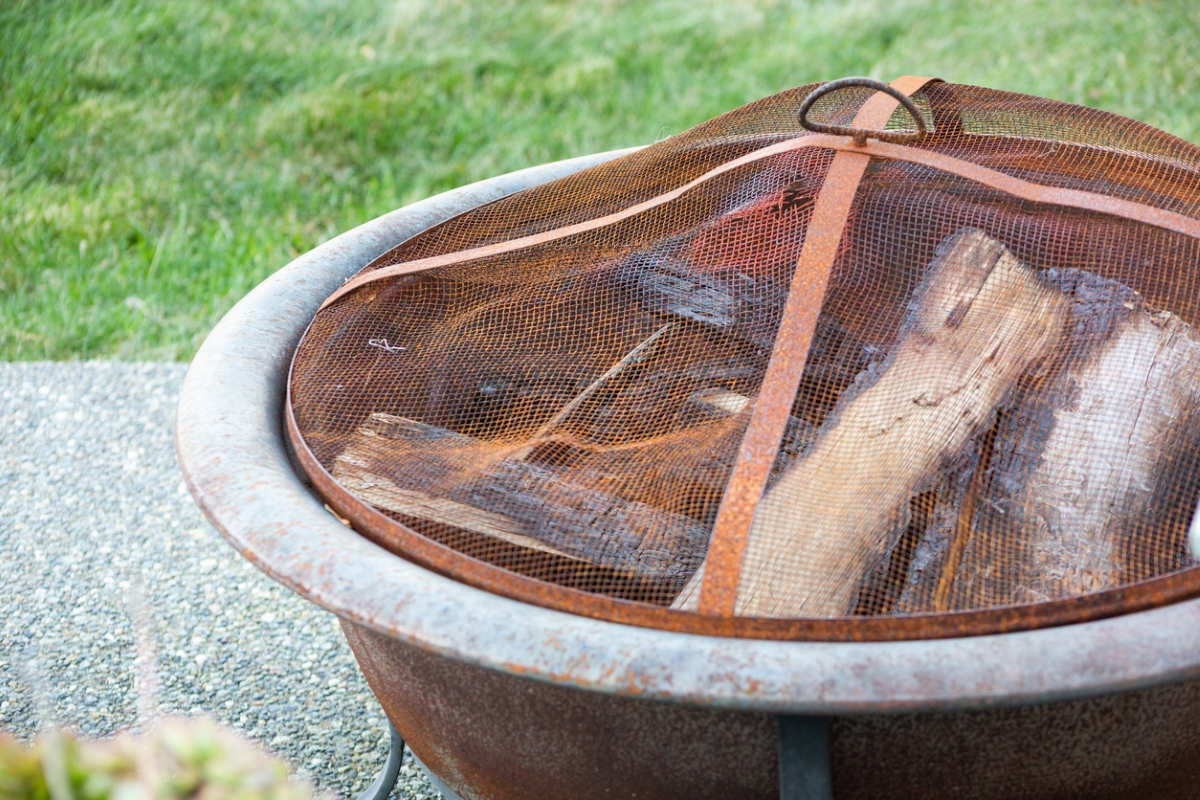
To prevent sparks and large embers from floating up and landing on people and structures, cover a fire pit with a spark screen. Also called a spark guard, a well-designed screen can confine sparks and embers while still keeping you and your guests perfectly toasty. Remember, metal spark guards get hot, so use a metal fire poker, heat-proof gloves, or safe long-handled tongs or grabbers to lift or open a fire pit screen. Many commercial fire pits come with screens or glass wind guards to protect gas flames from wind and to keep fingers away from the flame.
13. Check the fire pit again tomorrow—just in case.
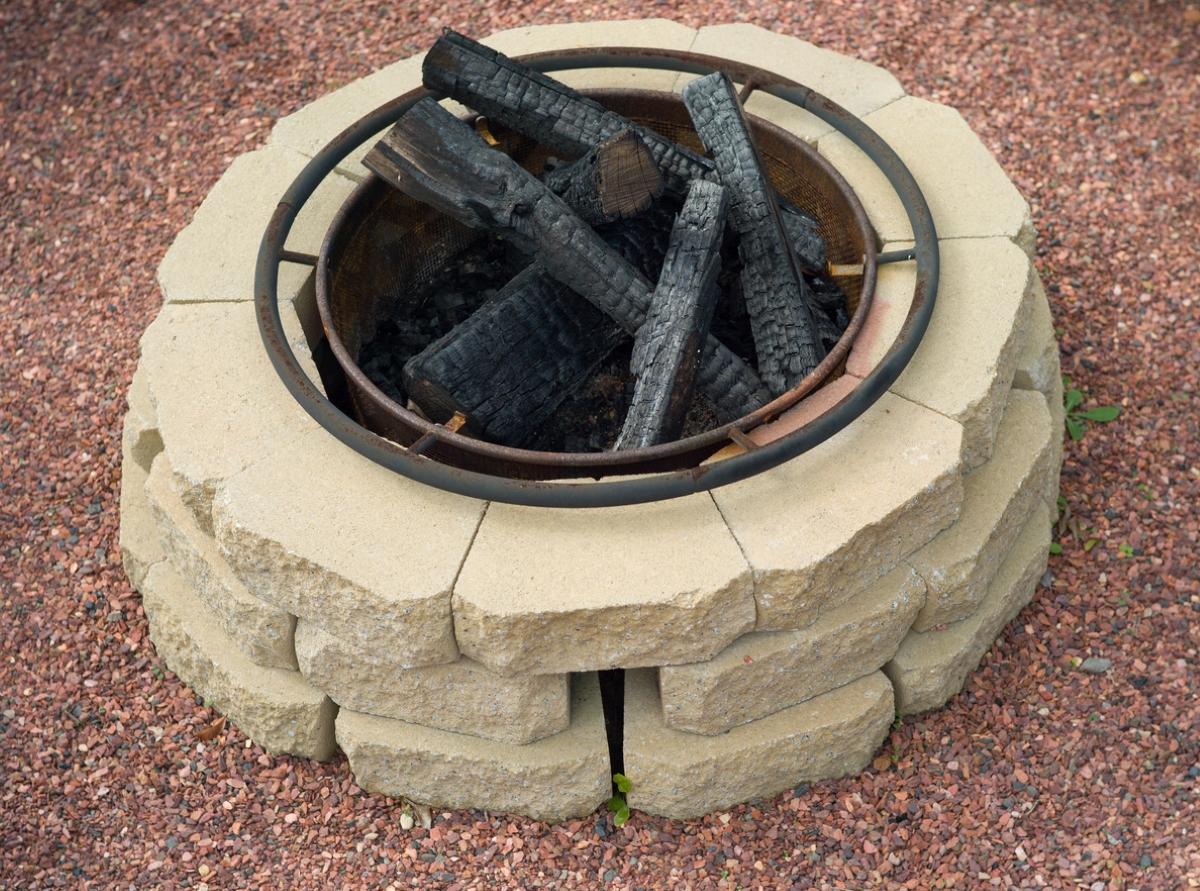
Even if you took steps to properly extinguish an evening fire, be extra safe and check the pit again the following day. Fires can still be hot or have a few remaining embers. Keep children away from the ashes and keep an eye out for embers. Before disposing of ashes, hover your hand over the pile to make sure it is not radiating any heat. Once it is safe, use a metal shovel to dispose of ashes in a metal pail or trash can. Then wet the ashes in the bucket by pouring water over them slowly. Avoid adding other materials to the metal container.
Even with a gas fire pit, if you are unsure whether you followed the manufacturer’s safety steps to extinguish last night’s flame or shut off the propane, do a quick check the next day.
Looking for a quality extinguisher to keep close to your fire pit? Read our researched guide to the best fire extinguishers.
